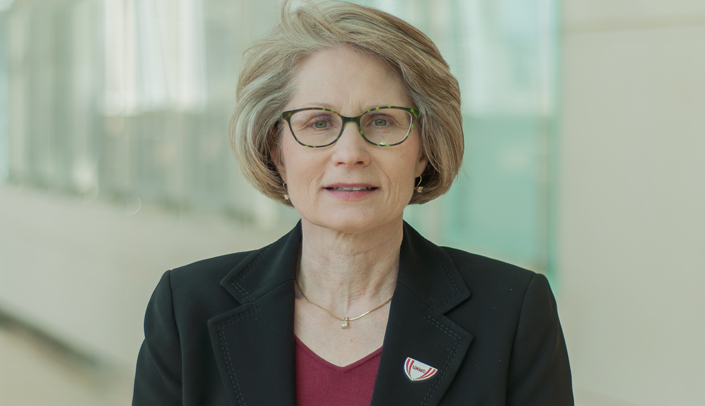Conventional wisdom, said Katherine Jones, Ph.D., associate professor of physical therapy education, is that patient falls in hospitals are a measure of nursing quality. But evidence says this is not the whole story.
Dr. Jones, a 2013 New Investigator, studies how teamwork can improve fall-risk reduction.
“Falls are fundamentally a biomechanical issue,” Dr. Jones said. “We maintain balance by keeping our center of mass inside our base of support. It’s physics.”
Now, why would someone’s center of mass move outside his or her base of support? Well, that can be complex and multifactorial. And so, multiple perspectives are needed.
“Physical therapists understand the biomechanics; the mechanism of postural control that keeps us upright,” Dr. Jones said. “Nurses understand the medical issues, including the impact of electrolyte imbalance and orthostatic hypotension. Pharmacists understand how medications affect our ability to maintain our balance.”
But if the question is, Why did this patient fall? The answer is fundamentally, physics.
“It’s not because they didn’t put the call light on. It’s not because they didn’t ask for help. It’s not because they didn’t use their assistive device,” Dr. Jones said.
|
|
The patient is not at fault. Rather, Dr. Jones said, her research shows that best results are attained when an interdisciplinary team is accountable for patient falls.
“If nobody’s accountable,” Dr. Jones said, “what we have found, is that these hospitals have the highest fall rates.”
But health care is traditionally known for operating in silos and hierarchies. If it’s everyone’s job, how does that work?
“Effective teamwork requires that roles and responsibilities are clear and that there is a shared mental model of the desired goal. And structured communication tools are used to flatten the hierarchy and help people to feel safe to speak up to those with more authority,” Dr. Jones said.
But of course, hospitals, organizations and individuals have to accept that teamwork is the best structure to use to tackle the problem. Dr. Jones’ research says that it is.
“If you think patients are safe because individuals are competent, then you are not going to support using teams to be accountable for patient safety and quality,” she said. “You have to understand human factors and human behavior and recognize that individual competency alone is not enough.
“Teamwork is a safety net for the fact that all health care professionals are fallible human beings. . And solving complex problems requires team members with complementary skills.”
